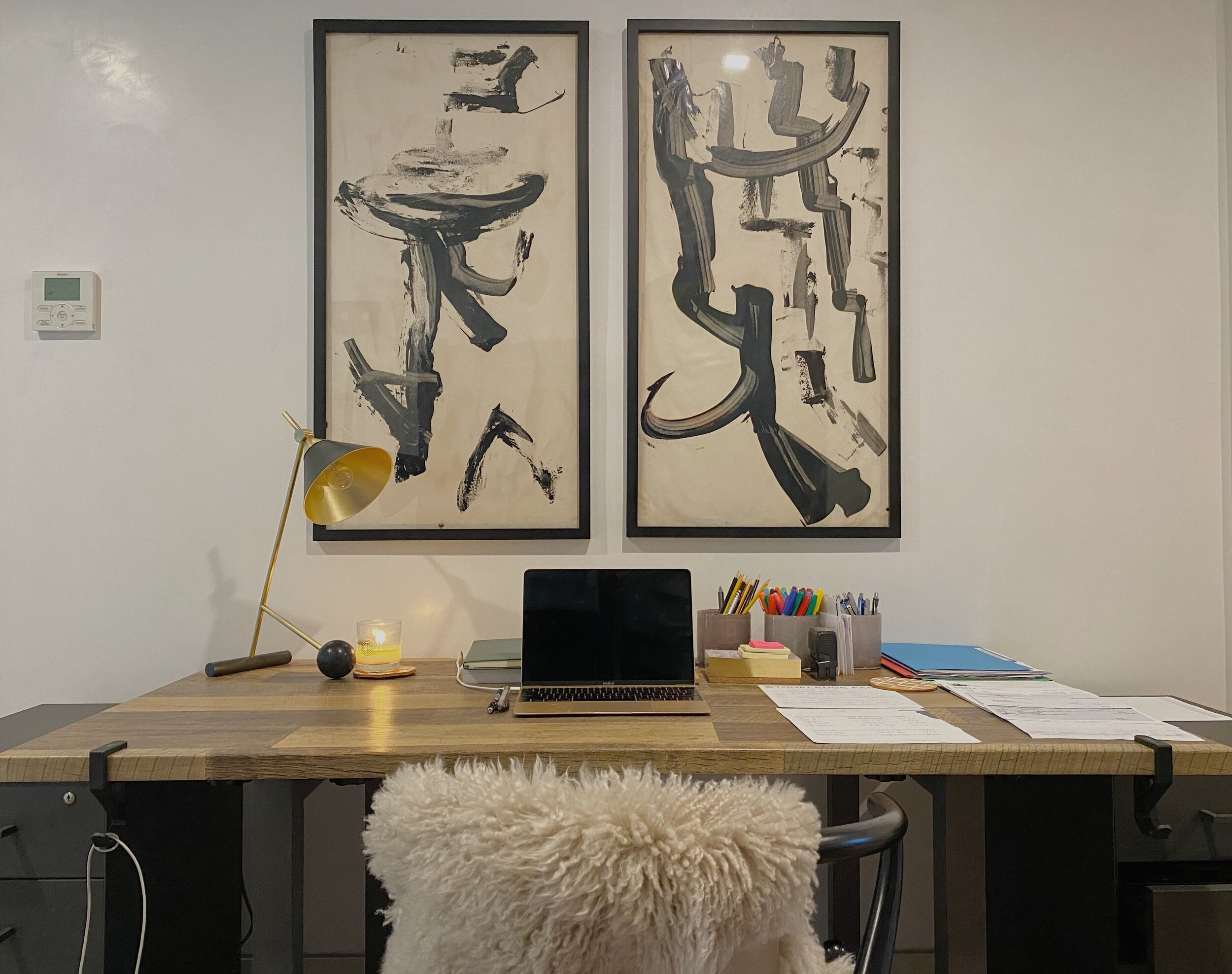Interior Designer on How to Create a Work-From-Home Space
Written and Photographed By Harley Frechette
Before “work-from-home” was an everyday phrase, my mom and interior designer, Mika Frechette, was the queen of it. Starting and growing a business while raising four children forced her to figure out a way to make her business thrive and keep the kids alive. Both of which, I am happy to report, she accomplished.
So, when the whole world was forced to transition to her trusty business model, she was on top of it. Not only does she have the perfect work-from-home space, she creates them every day for clients who come from an array of professions, have various spaces to work with, and have wildly different productivity methods. She carefully weighs the individual needs of her clients to design distinct spaces, each uniquely configured to set them up for success in the “new normal.”
Photo Credits of Harley Frechette
I sat down with her to learn how to create a practical and functional space that I feel comfortable and productive in. Together, we wrote out the step-by-step guide that she follows with each of her clients. Read on to learn how to create a beautiful space in your home where you’ll love to get your work done.
Photo Credits of Harley Frechette
Conduct a self- assessment. Understand your day-to-day at work. Ask yourself how you do your work best and begin the process with that vision in mind. No two people work the same, so creating a work-from-home space is an incredibly personal experience. It is important to begin with that understanding to build a space best catered to you.
Budget. This is a super important step that my mom says that most people look over (guilty!) Creating a budget from the get-go — no matter how big or small — helps you decide where you would like to invest. Pick out one splurge item and stick to it. Be it a nice chair, lamp, or piece of art, it is good to know early. Or maybe your budget is to not spend any money, in which case you can save your energy and avoid the shopping phase all together.
Take inventory from your home. Walk around your apartment or space and see what you already have to work with. Is there a small carpet in the living room that you could relocate? Or some photos in your bedroom that would help your desk feel more homey? Sometimes moving the items in your home around is refreshing, and the creation of a personalized work-from-home space is a perfect excuse to reorganize. (Also a great way to stay within your budget.) In addition, because many of us are working and learning from home right now, we have the luxury of choosing what we do (and do not) welcome in our office space. As Marie Kondo has suggested, if it does not spark joy, why keep it around?
Create a storyboard. Start by collecting images that simply make you feel good. A great way to do this is via Pinterest. Don’t think about the practicality of the images just yet — simply pin the ones that make you smile. After you have an extensive collection of images, narrow them down to an aesthetic that you think you can create and that you can see yourself working in every day.
Create the space. Creating a space is a process. It will evolve over time, and the more you work in the space, the better it will become for your personal and professional needs. The first things my mom adds are a scented candle, a coaster, file cabinets, coffee table books for inspiration, and a chair that is comfortable. From there, she adds and subtracts to the space as she sees fit. Add art, take away some decor, add light; do whatever you need to make sure the space is right for you. Another thing to consider is the walls and ceilings around the space — not only do your colleagues, clients, and peers see the space, but you look at them all day. Make sure they are adding to the space, not inhibiting it.
By following these five simple steps, you can create a space that makes you comfortable and puts you in a work mindset — something that can be quite challenging when this space exists within your home where you’re used to relaxing and decompressing. Ultimately, you should aim to create a space where you can get your best work done and walk away at the end of the day, successfully separating leisure and work in the home.
Photo Credits of Harley Frechette



